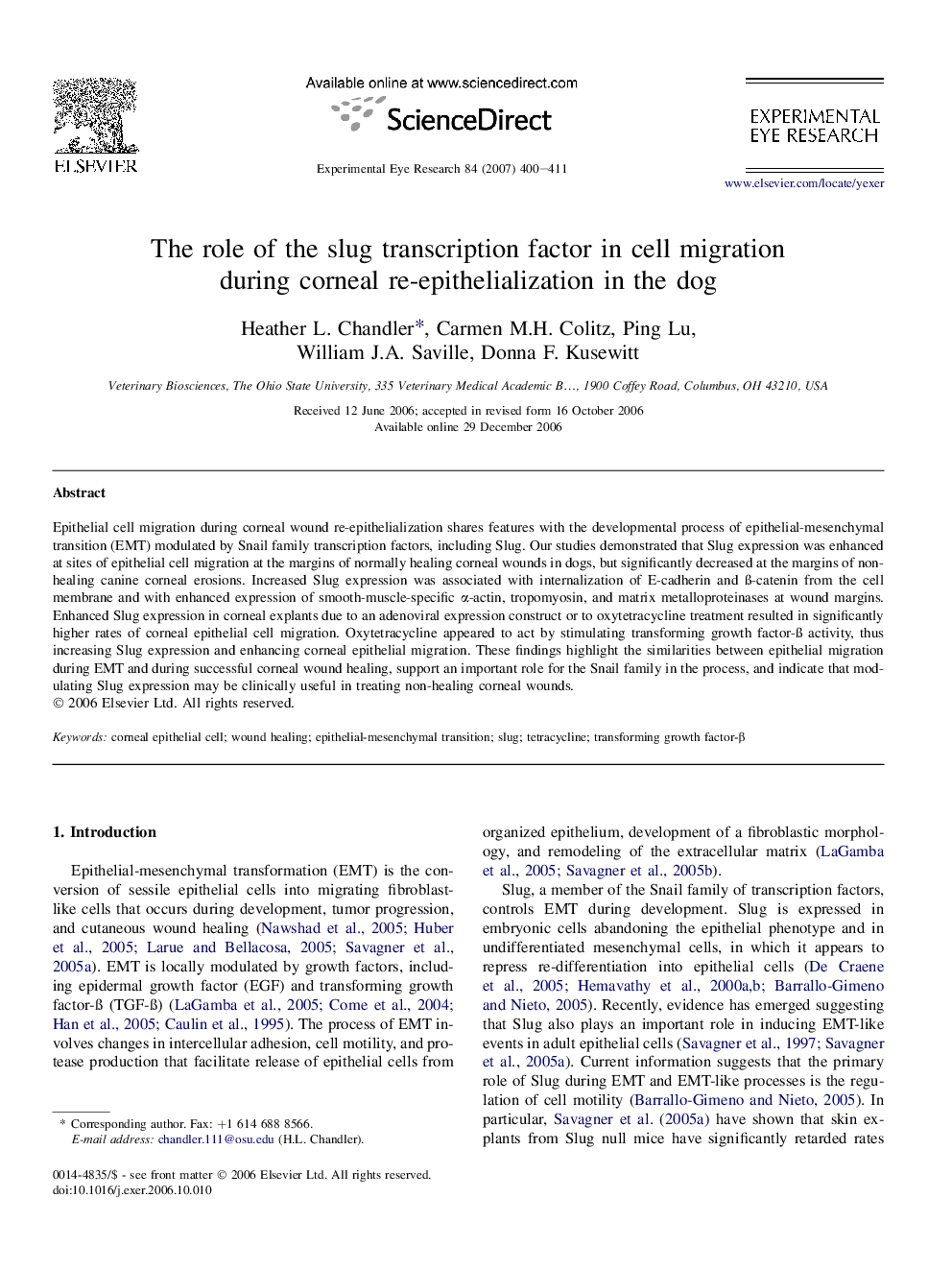| کد مقاله | کد نشریه | سال انتشار | مقاله انگلیسی | نسخه تمام متن |
|---|---|---|---|---|
| 4012928 | 1261220 | 2007 | 12 صفحه PDF | دانلود رایگان |

Epithelial cell migration during corneal wound re-epithelialization shares features with the developmental process of epithelial-mesenchymal transition (EMT) modulated by Snail family transcription factors, including Slug. Our studies demonstrated that Slug expression was enhanced at sites of epithelial cell migration at the margins of normally healing corneal wounds in dogs, but significantly decreased at the margins of non-healing canine corneal erosions. Increased Slug expression was associated with internalization of E-cadherin and ß-catenin from the cell membrane and with enhanced expression of smooth-muscle-specific α-actin, tropomyosin, and matrix metalloproteinases at wound margins. Enhanced Slug expression in corneal explants due to an adenoviral expression construct or to oxytetracycline treatment resulted in significantly higher rates of corneal epithelial cell migration. Oxytetracycline appeared to act by stimulating transforming growth factor-ß activity, thus increasing Slug expression and enhancing corneal epithelial migration. These findings highlight the similarities between epithelial migration during EMT and during successful corneal wound healing, support an important role for the Snail family in the process, and indicate that modulating Slug expression may be clinically useful in treating non-healing corneal wounds.
Journal: Experimental Eye Research - Volume 84, Issue 3, March 2007, Pages 400–411